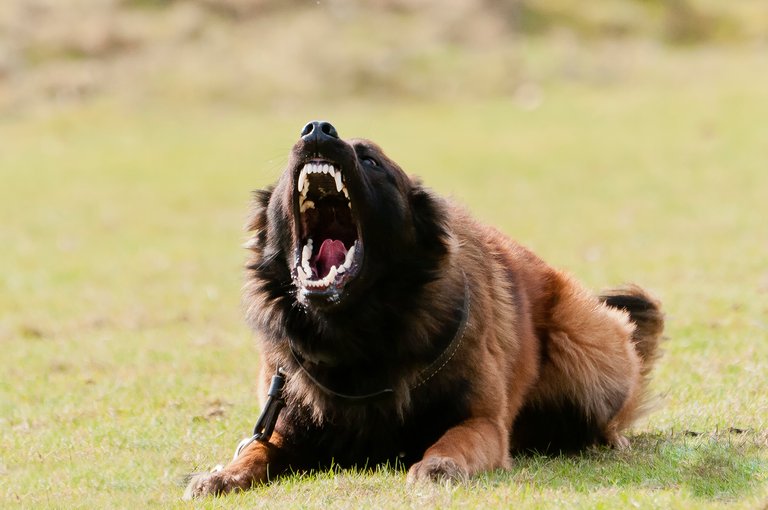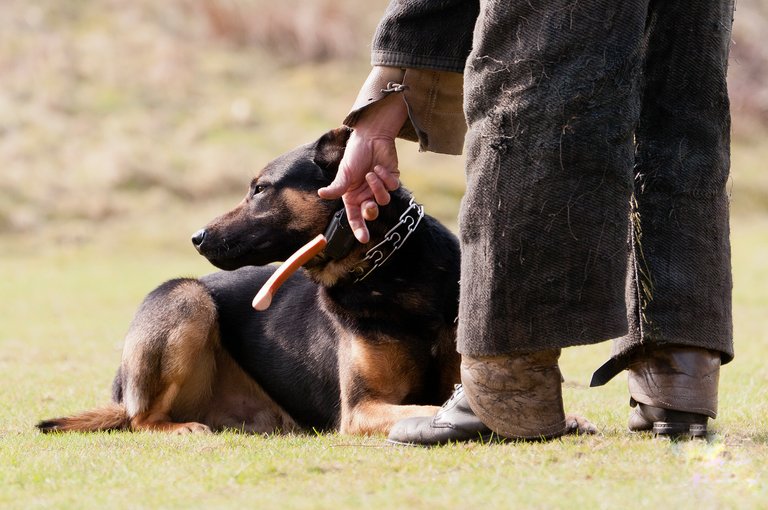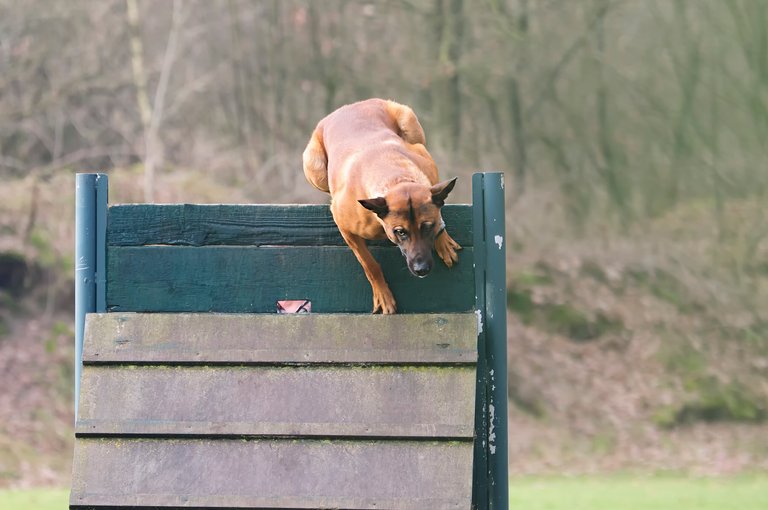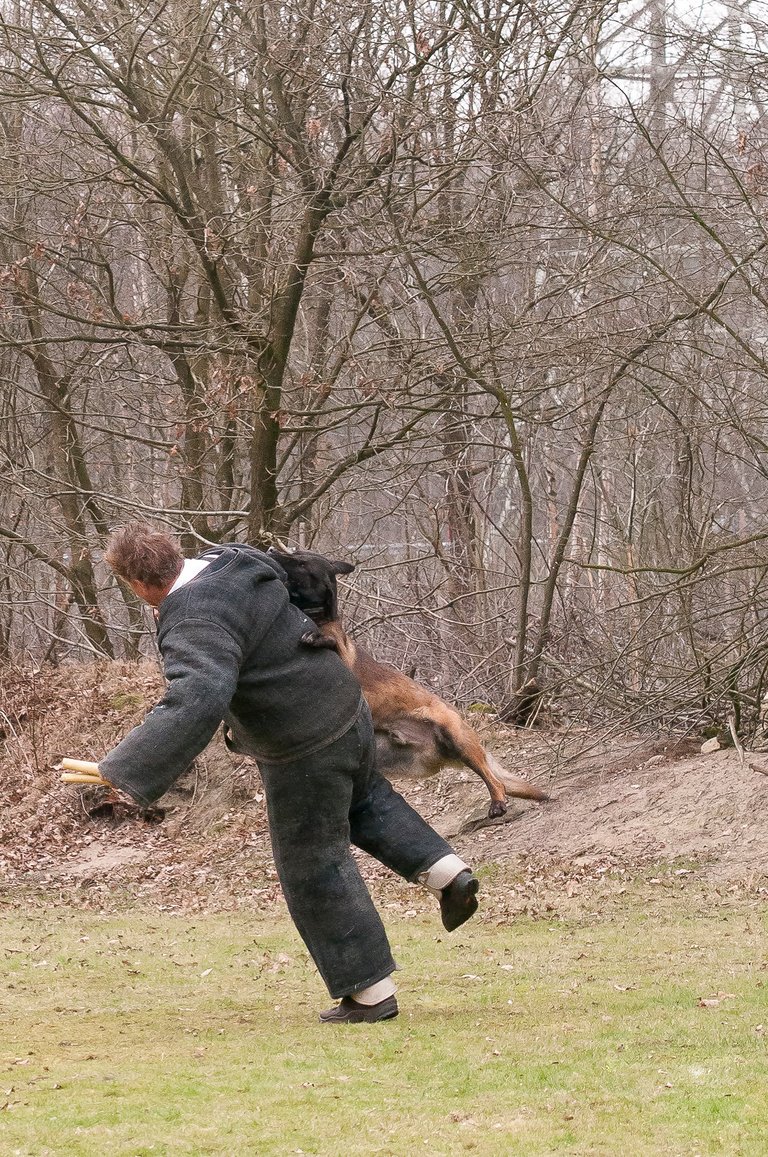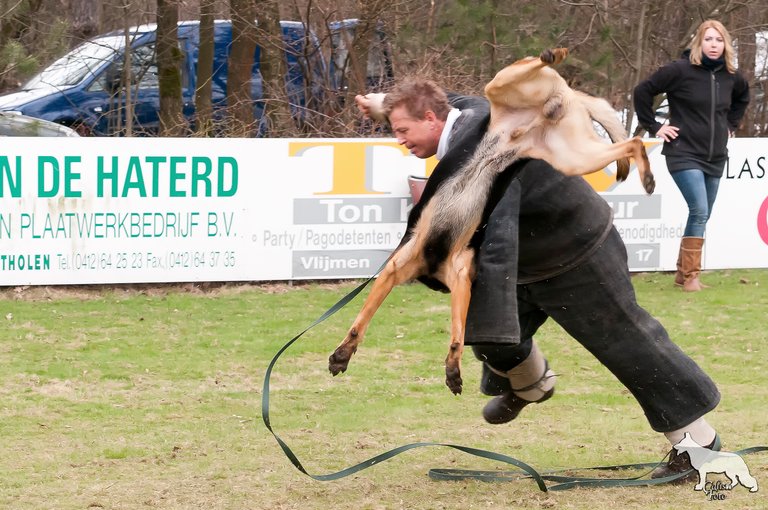Royal Dutch Police dogs Association in words and pictures ...
In this blog I want to shine a light about the police dogs Sport. A sport that evokes both admiration and horror. You love it, or you hate it. It is certainly not a sport for sensitive souls, it is not a sport for every dog, and it's not a sport for every human. And certainly the way in which the dogs are handled is not for everyone. But despite the fact that it is a hard sport, and you definitely will see things that you don't want to see at all during the training sessions of the sport ... but there are also very nice aspects to the sport. You see before your eyes a team being developped of a man with his dog. You see the unconditional love of the dog for his human, the bond of trust that dog and boss must have in order to reach the top performances that are required to succeed. You simply can not achieve that without love for your dog, and love for the sport. Because it is not only a hard sport for the dog, it is also a very hard sport for the human. I don't think that most of you have ever put on a 'protective suit'. And then had to run away with that very thick and heavy suit. And let yourself be attacked by a working dog.
I did it because I wanted to know what it was. And I can tell you, even with a 'protective suit' you feel very well that you are being attaced and after that you can count the bruises.
Besides that the 'suit' is incredibly heavy and it is terribly hard to work with, let alone to run or cycle ... So even though it is a hard sport for both dog and boss, it is clear that without love for the sport, without love for your dog, and withou the love from the dog for the boss there never can be achieved a top performance. And that top performance, that is needed to succeed.
How did I come into contact with the police dogs sport?
That I came into contact with the sport came through Myla. Myla is a cross breed between a Malinois and a Dutch shepherd. Her character is that of a Malinois, and she is stubborn. Very sweet, but just as stubborn as she is sweet. We knew the mother dog, it was not. So we went looking for the father dog. And that's where we came out in the Police dogs Sport. Myla appears to be a daughter of a Malinois who has won several championships in the Dutch police dogs. A dog with an incredibly strong character. And that's what we saw in Myla too. And that's how I got to know this sport.
After a friend and I went there to meet the owner of Myla her father, we got into conversation and the conversation came to photography. Soon we decided that we would take our cameras with us the next week ... and there it was born. Those men were glad that we wanted to photograph. And we were glad that we were allowed to take pictures. Finally, much happens within this behind closed doors. There is still a haze of mystery about the sport.
And there are many negative stories about the sport. And in my opinion that is not right! Yes, I have seen things that I had not wanted to see. No, that is not inherently inherent to the police dogs sport, even outside this sport there are people who abuse a dog and apparently enjoy it. I have also seen that these men love their dogs intensely, want to give their lives for it and say goodbye with tears in their eyes when the moment is there that the dog is actually sold to the police to lead a life of service. Most dogs don't even come that far but the men / women do spend countless hours with love in the training of the dog. People sometimes look strange that most working dogs have a loft outside the house. But they forget that those people are so busy with the dogs for so many hours a day that the dogs just sleep when they are in that loft.
Many dogs that live in the house get seriously less attention ... and certainly less movement together with the boss. Which dog is better then? When you think that a dog wants his movement and be outside.
But what is actually the Royal Dutch Police Dog Association.
The Dutch Police Dog Association, (as the association was called in the beginning), was officially established on Friday, November 1, 1907. In 1908, the first statutes were put on paper, and in 1912 the Royal K was added to the name. The K.N.P.V. was founded in Roosendaal, the office is located in Amersfoort, and officially the KNPV is based in "The Hague".
What exactly does that association do?
In short, that association trains dogs for the police. That was then the goal, and that is still the goal.
Where there used to be 1 training method, and that was a hard training method, fortunately there are many more possibilities today. And people are much more committed to their dogs. If the training is adjusted to the dog, the dog's character is looked at and several certificates can now be obtained. The latter is a very important advance for the welfare of the dog. Not every dog is suitable for the same work. And by the fact that several certificates can now be obtained, it is clear that within K.N.P.V. the well-being of the dog is increasingly important. Of course, the main thing is that the dog is trained to save people, to protect them.
The certificates you can get with your dog are:
- PH I (police dog I)
- PH 2 (police dog 2)
- Object Surveillance Dog
- Basic Search Dogs
- Search dogs (Tracking Dog, Sorting Dog and Rescue Dog disciplines)
Below is a summary of the exercises that make up Police dog 1 and 2 certificates. I will not explain the other certificates here. Simply because I hardly photographed there.
Police dog 1
What should a dog be able to do to achieve the Police dog 1 certificate?
The Police dog 1 component is divided into different departments and each department has its own exercises.
Section 1 of Police dog 1 consists of
- Follow on leash, exercise A
- Follow unleashed exercise B
- Tracking next to a bicycle, exercise C
- Staying there, exercise D
- Refusing offered and thrown food, exercise E
- Refusing found food, exercise F
- Being quiet, exercise G
The jumping exercises H, I and J general
- The free jump over the obstacle, exercise H
- The climb over the fence, exercise I
- The width jump over the pit, exercise J
- Looking up and retrieving small objects, exercise K ...
Section 2 of PH 1 consists of
The waterworks generally
- The swimming over, exercise A
- Bring a large object to the shore, exercise B
Section 3 of PH 1 consists of
General provisions
- Guarding an object, exercise A
- The reviving exercises B and C in general
- The run to a large object, exercise B
- The run to a person, exercise C
- The transport of a detainee, exercise D
- Stopping a suspect, who defends himself with a stick, exercise E
- Refusing to follow commands from strangers, exercise F
- The transport followed by halting a fleeing suspect, exercise G
- The halting of a defendant on a bicycle, exercise H
- Stopping a fleeing suspect, exercise I
- Stopping a suspect, who shoots at the dog, exercise J
- The investigation into the dog's resistance to the thrust, exercise K
- The transport of a suspect followed by defending the handler, exercise L
- Recalling the chasing dog, exercise M
- The arrest of a fleeing, but on time standstill suspect, followed by the transport.
(mock attack), exercise N
The exercises for the police dog 2 certificate are all the same, with one extra exercise.
- The transport followed by halting a fleeing suspect, exercise O
The dog's level is significantly higher for the Police Dog 2 certificate than for Police Dog 1.

